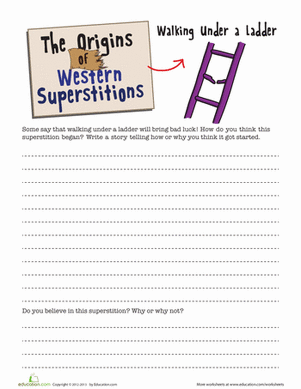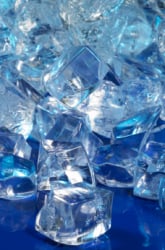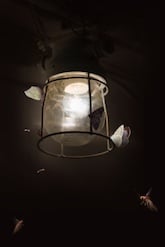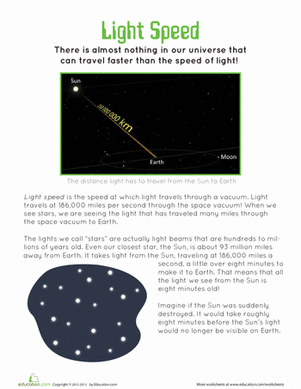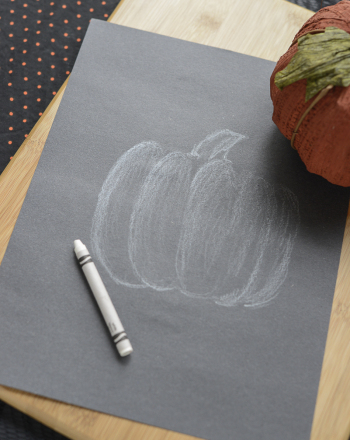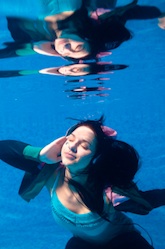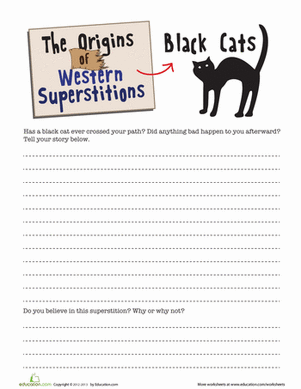Science project
Are There Other Animals that Glow Under a Black Light Besides Scorpions?
Grade Level: 4th - 6th; Type: Life Science
Objective:
Scorpions fluoresce or glow under ultra-violate (UV) light turning a teal green so they are easy to find with the aid of a Black light during the night. The research aspect of this science fair project is to determine which other common animals will glow under a UV Black light.
- What is the project about?
- What are the goals?
A Black light is the name given to a lamp emitting UV radiation and very little visible light. Ultraviolet radiation itself is invisible, but illuminating certain materials with UV radiation prompts the visible effects of fluorescence and phosphorescence. Scorpions glow or fluoresce under UV light. Along with a scorpion, crayfish, centipede, millipede, and a cricket will be placed under a Black light to see if like the scorpion they too will show fluorescence. From the results of the investigation a data table will be prepared and a graph plotted.
Research Questions:
- What is UV light?
- What is a Black light?
- Are there other animals that glow under a black light besides scorpions?
- Which of the animals tested glowed under UV light?
- Of the animals tested which one(s) did not glow under the Black light?
- What was the control for this investigation?
Ultraviolet radiation (also known as UV radiation, UV light or ultraviolet rays) is a form of energy traveling through space. Ultraviolet (UV) radiation is defined as that portion of the electromagnetic spectrum between X-rays and visible light. The Sun is the primary natural source of UV radiation. Artificial sources include black lights. A black light is the name commonly given to a lamp emitting almost entirely UV radiation and very little visible light. Ultraviolet radiation itself is invisible, but illuminating certain materials with UV radiation prompts the visible effects of fluorescence and phosphorescence.
Scorpions fluoresce because they contain a fluorescent protein in the hyaline layer of their exoskeleton. The hyaline layer of the cuticle is very tough. It is often found in scorpion fossils. Even after hundreds of millions of years, while all the other layers of the cuticle have been lost, this hyaline layer remains embedded in fossil rocks and still fluoresces. The fluorescence is thought by scientists to serve as an ultraviolet sensitivity mechanism, perhaps allowing the scorpion to avoid damaging light levels. Scorpions cannot see ultraviolet light.
Other animals that fluoresce include crayfish, centipedes, and millipedes. Many centipedes species glow under UV light to some degree, especially the terminal legs and often the antennae.
Any required diagrams/pictures (Pictures speak a thousand words!)
Digital photos can be taken during the experimenting process also the following sites offer down loadable images that can be used on the display board:
http://www.rei.com/skuimage/686100/220
http://fireflyforest.net/images/firefly/2006/November/fluorescent-scorpion.jpg
http://www.ecopolis.org/wp-content/uploads/2007/12/cloned-cat.jpg
Materials:
Emperor scorpion, protective gloves, tweezers, crayfish, centipede, millipede, cricket, 5 baby food jars or clear plastic cups, Black light, wire mesh screening, and masking tape.
- What materials are required?
- Where can the materials be found?
Tweezers, cups, wire mesh screening and masking tape can be a purchased locally at most major retail (Wal-Mart, Target, Dollar general, etc) discount department stores. The various animals are available at most pet supply stores, or captured in the wild.
The live animals needed for this project can also be ordered online from Nasco Science. A 6 inch portable UV Black Light and fixture is available from the local hardware or lighting store or from Educational Innovations catalog #UV-640. The Tri-fold display board is available from an art & craft store.
Experimental Procedure:
| Name of Animal | Glow (Fluorescence) Seen |
| Scorpion | |
| Millipede | |
| Centipede | |
| Crayfish | |
| Cricket |
- Gather 5 empty clear plastic cups or baby food jars.
- Wear protective gloves whenever catching, transferring or otherwise handling a scorpion.
- Using forceps or tweezers carefully place a crayfish, centipede, millipede, cricket, and the scorpion into separate jars.
- Cover the jars with wire mesh screening and tape the mesh securely to the jars.
- Turn out the room lights.
- Turn on the Black light an aim the beam at each animal.
- 7. Record the data in the table. Use the terms “strongly fluorescent,” “mildly fluorescent,” “little florescence,” or “no fluorescence” when recording the intensity of the glow seen.
- Using graph paper visually display the data in the table by plotting a bar graph similar to the one shown of the name of animal tested verses amount of UV fluoresces.
- As these creatures are such a benefit to our environment once the investigation has been completed consider releasing them into a natural woody area rather than killing them.
- If they are to be destroyed, crush the individuals then use a flyswatter or long forceps to remove the bodies to the trash bin.
Terms/Concepts: Insects; arachnids; Black light; ultraviolet light; fluorescence; phosphorescence
References:
References to related books
Title: Simon & Schuster Children's Guide to Insects and Spiders
Author:Jinny Johnson
Publisher: Simon & Schuster Children's Publishing ISBN-10: 0689811632 and ISBN-13: 978-0689811630
This profusely illustrated book contains an introductory survey of over 100 assorted insects and arachnids. A preface describes the animals' general characteristics, some special anatomical features, and the major differences between the two classes. The bulk of the material is organized into eight chapters, each chapter begins with a general discussion of the subject and a greatly enlarged, full-color photo of a representative species. An illustrated "catalog" of about a dozen different invertebrates follows.
Title: Scorpions (Complete Pet Owner's Manual)
Author: Manny Rubio
Publisher: Barron's Educational Series ISBN-10: 0764139819 and ISBN-13: 978-0764139819
This book presents information about scorpions and is written for non-specialist animal owners and prospective owners, with facts about the scorpion's origins and traits, as well as advice on purchasing, housing, feeding, health care, and much more. The book is filled with color photos and instructive line illustrations. The young investigator and/or his or her parents (teachers) should considering reading this book before handling the scorpion and the other animals that will be used in this science fair project.
Links to related sites on the web
Title: Fluorescent Scorpion in UV Light
URL: http://fireflyforest.net/firefly/2006/11/13/fluorescent-scorpion-in-uv-light/
Title: Fantastic Photographs of Fluorescent Fish
URL: http://www.sciencedaily.com/releases/2008/09/080915210600.htm
Title:Glow-in-the-Dark Animals
URL: http://www.trendhunter.com/trends/glowing-pigs
Title: Ultraviolet Radiation
URL: http://www.ourworld.la/ow/content/view/31/43/
Title: How Black Lights Work
URL: http://science.howstuffworks.com/innovation/black-light.htm
NOTE: The Internet is dynamic; websites cited are subject to change without warning or notice!
Education.com provides the Science Fair Project Ideas for informational purposes only. Education.com does not make any guarantee or representation regarding the Science Fair Project Ideas and is not responsible or liable for any loss or damage, directly or indirectly, caused by your use of such information. By accessing the Science Fair Project Ideas, you waive and renounce any claims against Education.com that arise thereof. In addition, your access to Education.com's website and Science Fair Project Ideas is covered by Education.com's Privacy Policy and site Terms of Use, which include limitations on Education.com's liability.
Warning is hereby given that not all Project Ideas are appropriate for all individuals or in all circumstances. Implementation of any Science Project Idea should be undertaken only in appropriate settings and with appropriate parental or other supervision. Reading and following the safety precautions of all materials used in a project is the sole responsibility of each individual. For further information, consult your state's handbook of Science Safety.


